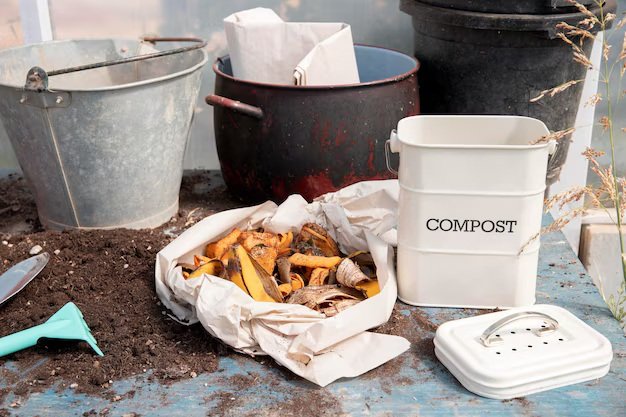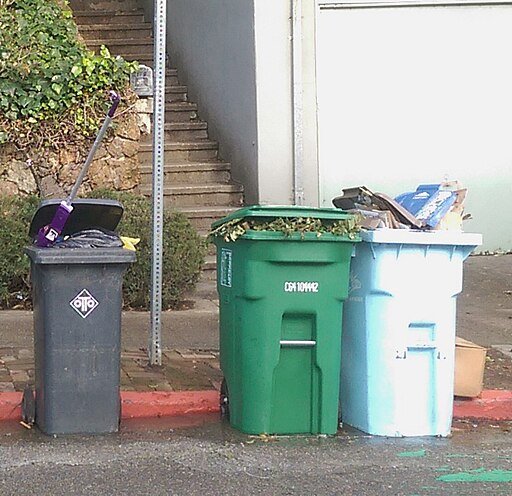How to Start Balcony Composting and Low-Space Gardening that Cuts Household Waste
When you live in a flat, it’s easy to think that composting is for people with backyards. That’s no longer true. Turning kitchen scraps into soil on a balcony or tiny patio cuts the amount of waste your household sends away, reduces greenhouse gases from landfills, and gives you free, nourishing compost for window boxes and potted herbs. A global estimate shows we lose huge amounts of food each year, and a large share comes from homes — which means individual action does add up. According to the United Nations Environment Programme, the world discards roughly 931 million tonnes of food every year.
In the United States and many other places, households are still the biggest single source of food waste. The U.S. Environmental Protection Agency estimated that millions of tons of food were generated as waste in recent national reports, and most of that material ended up in landfills rather than being composted or reused. Composting at home — even in a small container — helps change that flow and keeps food out of landfills where it becomes methane, a potent greenhouse gas. A practical benefit is immediate: compost improves potted soil so plants hold water better and grow stronger, which is especially useful for small-space gardeners. According to the EPA, composting and keeping food out of landfills are key ways to reduce emissions.

How to Start: Four Compact Systems that Actually Fit a Balcony
You don’t need a huge pile to compost. There are four approaches that work well when space is tight: vermicomposting (worm bins), bokashi (fermentation), sealed tumblers designed for balconies, and freezer collection + drop-off. Each has pros and cons, and you can pick one based on how much food you throw away, whether you grow plants, and how much time you want to spend.
Vermicomposting uses red worms to turn food scraps into rich castings. It’s very efficient, works indoors or on a sheltered balcony, and produces a concentrated soil amendment in a few months. According to Extension Services, and vermiculture guides show that worms will eat most kitchen scraps if you balance food with bedding (paper, cardboard, dry leaves) and keep the bin damp but not waterlogged. Rhonda Sherman, an established voice on worm farming, has said the approach is distinct from hot composting and can be managed at a small scale with steady results.
Bokashi is an anaerobic fermentation method that “pickles” food scraps using a bran inoculated with beneficial microbes. It’s sealed, fast, and takes up very little room — the fermented mix is later buried in soil or added to a compost pile to finish. Bokashi accepts citrus and small amounts of cooked food that are harder for some other small-scale systems to handle.
Sealed tumblers and balcony-specific compost bins let you compost aerobically without mess or obvious smells. They’re designed to limit leakage and can be placed on a tarp to protect flooring. If you’re on a high balcony where weight is a concern, check load limits before you fill a heavy bin. Garden guides recommend rotating the tumbler weekly and mixing “browns” (paper, dry leaves) with “greens” (food scraps, coffee grounds) to speed breakdown.
If you don’t want to compost at home, most cities now offer solutions such as frozen-scrap collection, curbside organics, or neighbourhood drop-off points at farmers’ markets and community gardens. Freezing scraps in a bag (then moving them weekly to a drop-off) is a simple, no-smell trick recommended by sustainability officers. The National Geographic guide to apartment composting offers this low-effort route as an easy entry step.
Results — Short Case Studies
A university sustainability officer and students in Washington, D.C., report that small-scale composting practices — from worm bins in dorms to freezer-collection programs — cut the volume of food sent to trash and helped residents feel more connected to how food is used. Sophie Jones, a sustainability associate, quoted in a major environmental feature, described how people who composted noticed fewer smelly trash trips and better houseplant growth from finished compost.
In Tempe, Arizona, a student named Emilee documented starting balcony composting and learning practical routines for small-space systems: frequent small additions, watching moisture, and using finished compost in containers and community plots. That hands-on story shows how learning by doing avoids the fear of “mess” and builds simple habits that stick.
On the policy side, cities are changing. New York City moved to mandatory curbside composting for many multi-unit buildings, pushing residents and building managers to adapt to organics collection and, in some cases, spurring residents to begin their own in-unit solutions or join building-level compost programs. This shows how local rules and infrastructure can multiply the impact of small at-home actions. A report on the city’s recent rollout explains both the promise and the operational challenges buildings experienced during the transition.
(These numbers are intentionally concise so you can compare your own weekly scraps to national scales. Use them to set realistic targets: a single apartment saving a small handful of pints per week quickly scales to kilograms per month.)
What Experts Say, and Simple Step-by-Step Actions to Start Today
Experts emphasise two ideas: make it easy, and match the method to your life. Brenda Platt from the Institute for Local Self-Reliance explains that composting “enhances soil tilth and fertility” and that community-level efforts often spark wider municipal programs. National and university sustainability advisors all suggest small, repeatable habits — freeze scraps, keep a worm bin shaded, balance browns and greens — rather than attempting complicated methods on day one.
A compact, practical plan you can begin today:
- Pick a system that fits your space: worm bin if you want finished compost for plants; bokashi if you need to handle cooked food and citrus; sealed tumbler or drop-off if you want low maintenance.
- Start a small kitchen caddy: a sealed container in the freezer or a countertop pail with a charcoal filter reduces smell and makes transport easy.
- Learn the simple balance: when in doubt, add some dry paper or cardboard to reduce wetness and odour. For worm bins, provide bedding and chop scraps small so worms can process them quickly. NC State Extension and vermiculture guides outline these basic rules for vermicomposting.
- Use finished compost: add a spoonful to potting mix or topdress herbs and vegetables to see quick plant health gains.
- Check local services and rules: many places now offer curbside organics or community drop-offs; in cities with new organics rules, building-level programs can be a path to scale your effort. If your city has a compost drop-off, try freezing or bagging scraps for weekly drop-off.
Conclusion
Balcony composting and low-space gardening are practical ways to cut household waste and improve soil for potted plants — they are not symbolic gestures but concrete, measurable actions. Composting reduces what goes to landfills, helps manage methane emissions, and returns nutrients to the urban soil cycle. If you want to go further, combine balcony composting with mindful shopping and meal planning to reduce waste at the source: buy what you need, store food correctly, and freeze scraps for composting when helpful. According to recent environmental coverage and national waste reports, household choices are central to reducing the large volumes of food the world discards each year.







